Career Profile: Silka Mitchell
As part of our Career Profile series, we had the privilege of speaking with, Silka Mitchell, Group Creative Director, Istoria Group. We’re pleased to share Silka’s career so far and hope you can find inspiration in her journey to drive forward your own creative career.
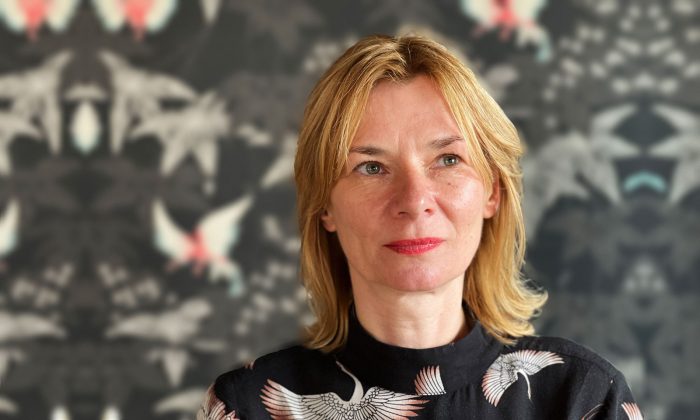
Please could you introduce yourself and Istoria Group?
Hello, I am Silka Mitchell, Group Creative Director of Istoria Group, a creative business collective based in Bristol and Indianapolis and comprised of three main sister companies – events and exhibitions agency Ignition; retail, branding and hospitality designers Phoenix Wharf and digital innovators Tiny Spark – as well as a small number of ‘Incubator Hub’ companies we help support and grow. My role is to lead the creative direction and design output of the company.
When/how did you discover that you had a passion for design?
From a very early age, much to my mother’s frustration, I wanted to change the look and use of everything, including the design of my room, furniture, clothes, shoes and hair! I worked very hard on this, making things out of scrap material, knitting, sewing, painting, cutting, sticking and dying. It was all trial and error – and more often error – but I loved the process and the passionate feelings I experienced whilst doing anything creative.
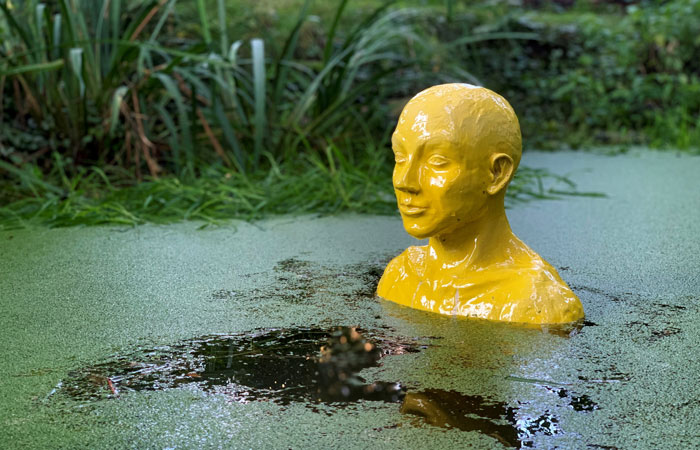
Adam, Leepswood, Germany
I remember designing a new way of packaging the Christmas presents I’d bought for my family. I covered balloons in papier-maché, placing the presents inside, closing the outer shell and spraying them gold. I had to provide instructions on how to carefully cut open the package to create two bowls. They looked pretty awful and smelt of spray-paint! The spray paint then rubbed off on everyone’s hands, furniture and finest Christmas clothes. It was a disaster really but quite a memorable one!
These early efforts didn’t in any way deter me from wanting to create. They just made me want to learn more about technique.
What is your educational background and what did you take away from your degree that has been the most vital throughout your career?
After a classic school education in Germany, I started working as an apprentice in textile design. I studied the technical trade and learnt the practical skills required for textile design. I also learnt that two-dimensional design wasn’t the right medium for me and so I enrolled on an Interior Architecture course in Coburg, finishing with a Masters in Interior Architecture.

Design Installation for Private Client, Kulmbach, Germany
During my time at college, we had time to play, a great workshop and lots of freedom to explore ideas. The techniques and experiences from that period still feed me now, when time-to-design has become shorter and more pressured. What I really took from my degree is that I should follow my heart and stick to what I believe in. Some people didn’t understand my final show and were a little scathing – and yet the Professors awarded me a Distinction, which was quite an honour and gave me a firm belief in my own convictions!
How did your career progress?
After graduating, I worked with a group of friends designing and building bars in and around Nuremberg, near to where I grew up. We made everything ourselves, generally using found materials, and I learnt a great deal about innovative resource utilisation.
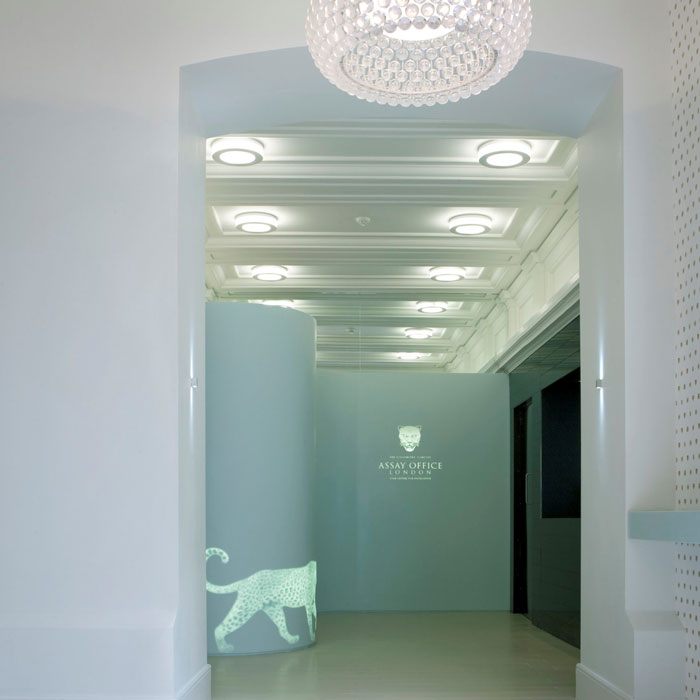
Neu Architects, Goldsmiths Assay Office
During this time, I visited London on a business trip and fell in love with the city and the wonderful young designers I met there. Soon after, I was offered a position at a fashionable product design company called Inflate and was then headhunted by design company Brinkworth. At that time, Brinkworth was in its infancy with just two employees. In the course of my time there, it grew to a 30-strong team, diversifying from pure retail design into a wide range of commercial and domestic projects. After a short hiatus for the birth of my first child, I formed a small design enterprise called Olive Black, which later became Neu Architects in partnership with Ben Paul, working on a wide range of architectural projects in both the private and public sector. After the recession and the birth of our third child, my partner and I decided it was time for a new adventure for the whole family! We moved to Germany, to the area I grew up in – the stunning rural landscape of Upper Franconia – where we established Leepswood, a multi-purpose series of buildings and home, incorporating a design studio, a hire-able venue and a place to stay.
What have been your career highlights?
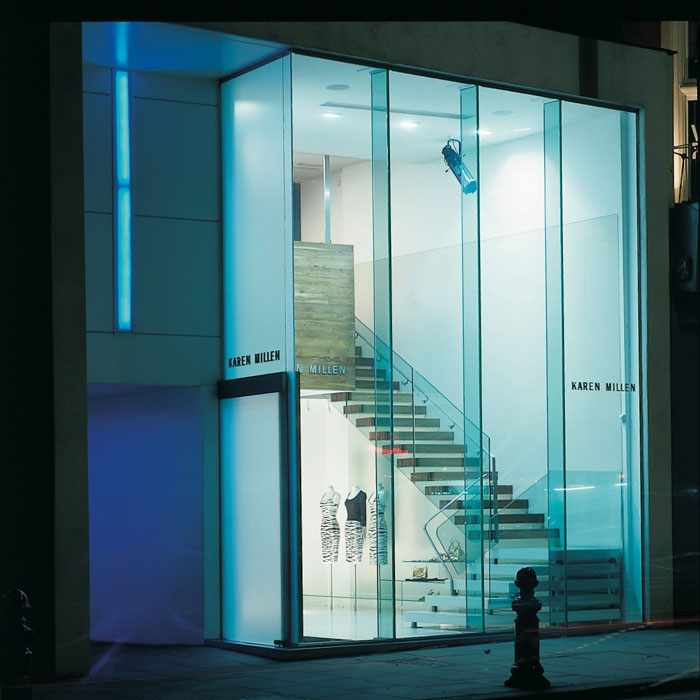
Karen Millen exterior, Brompton Road, Knightsbridge
There were lots of highlights at Brinkworth, but designing the Karen Millen flagship store on London’s Brompton Road rates as one of the best. We had ventured into new territory with a series of formative techniques such as UV Glass bonded shelves and stairs and a specialist vinyl-covered, double height glass frontage, animated by films created by students from St. Martin’s College of Art. The project won awards around the globe.
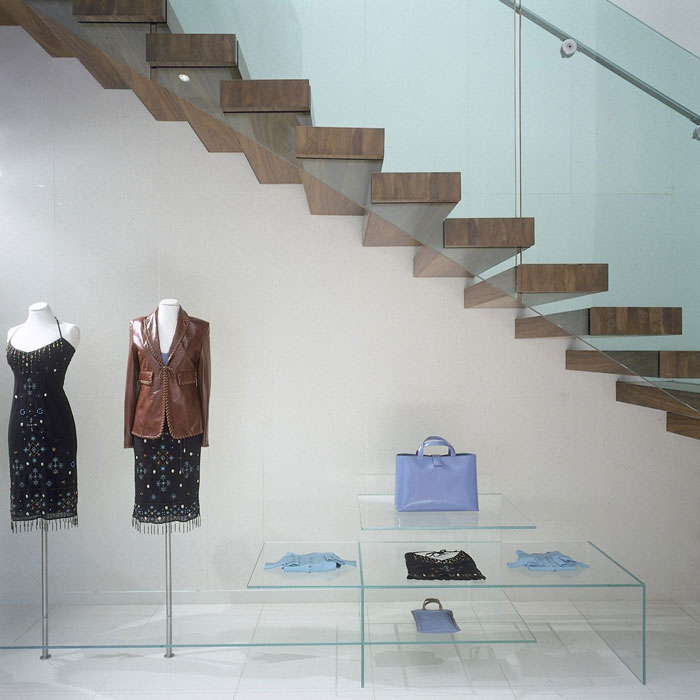
Karen Millen interior, Brompton Road, Knightsbridge
In terms of people, projects, challenges and success, the AFC Stickerei project, undertaken at Leepswood, encapsulates them all – and then some!
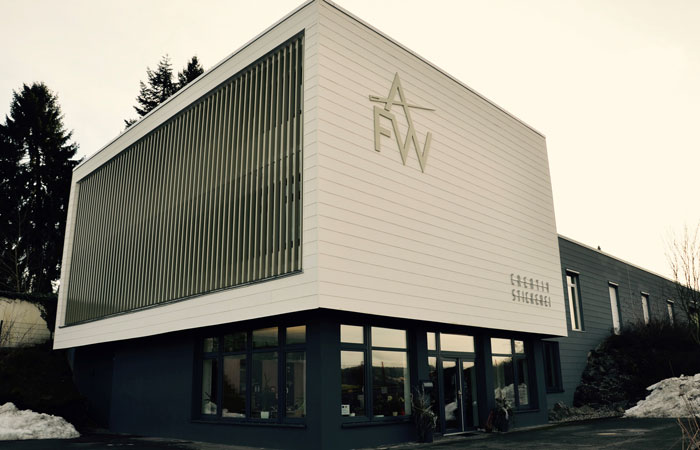
AFW Creative Stickerei Marktleugast, Germany
This project had at its heart a wonderful story of women factory workers taking over a local embroidery business that was going bankrupt and turning it into a vibrant and successful enterprise. My involvement grew to include the design and project management of the complete factory makeover.

Souvenir Hof, Germany
More recently, I was responsible for the design and project management of Souvenir, a concept store for a large group of start-up retailers in Hof, a small city near where I lived in Germany.
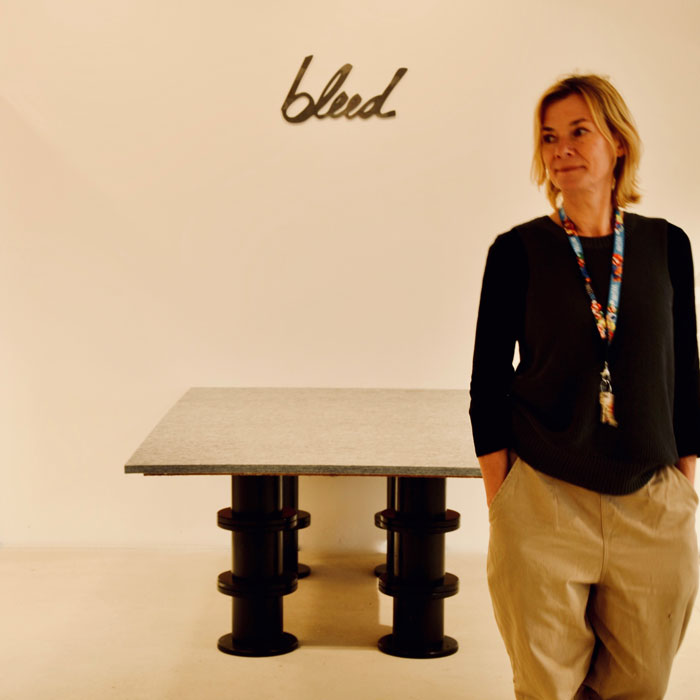
Silka Mitchell at Souvenir Hof, Germany
The concept involved local artists as part of its creation and featured the use of found materials and self-made furniture. The project was exciting, totally creative and a great success. I thoroughly enjoyed having to respond to such challenges for the good of the local community and felt my many years of experience were being well-utilised.
Could you tell me about any key projects you’ve worked on and why were they important to you?
Bow Arts Trust was certainly a key project that was very important to me. Not only was it one of the first major public projects/public art pieces I designed, but it was a low budget, high profile project for a non-profit arts organisation providing studios, accommodation and arts education across east London. It was also the first major project I worked on in collaboration with my husband who initiated and managed the project!
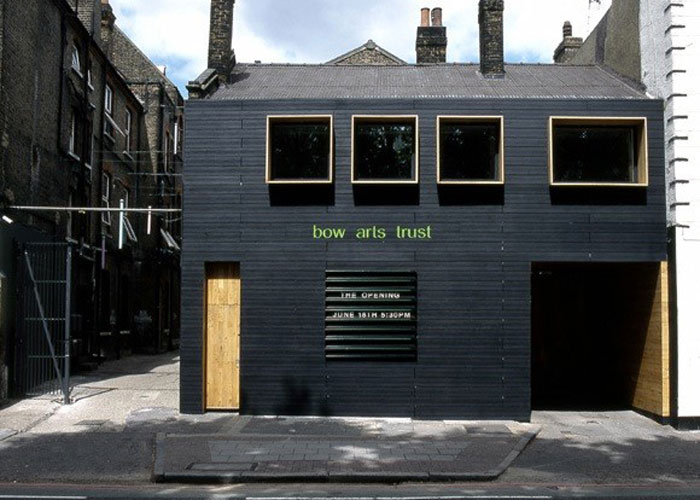
Bow Arts Trust, London
Against the odds, we transformed the face of this wonderful organisation, bringing huge value and a complete change in atmosphere to a previously dangerous and disregarded location. I am still amazed and proud that in spite of the opinions of the local council, the building’s black façade was never graffitied over, which I like to think was a sign of respect. After nearly 20 years, the building continues to contribute to the local street-scene and the lighting installation has welcomed thousands of visitors to the Nunnery Gallery on Bow Arts Lane.
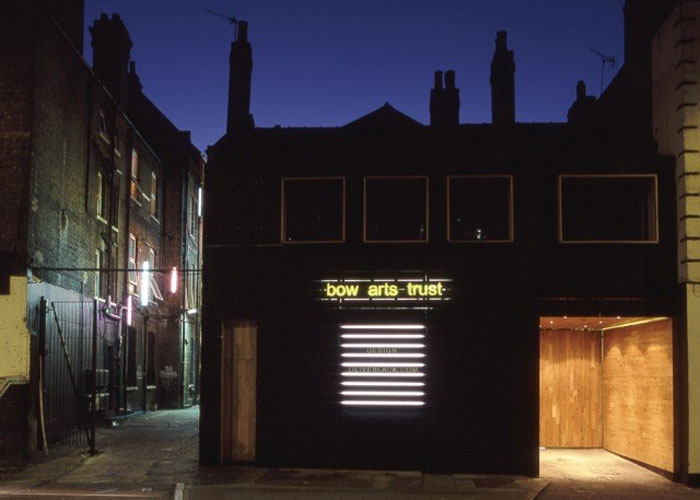
Bow Arts Trust, London
The project was recognised for its part in a wider series of regeneration initiatives as winner of ‘Best Community Initiative’ at the Mayor’s Planning Awards in 2004.
What do you feel are your core skills?
Talking about my core skills is not one of my core skills – so I asked my husband who’s known and worked with me for over 20 years for his opinion! He says ‘Being able to cut to the chase; time efficiency; direct speech; integrity; an innate sense of sustainability; a hands-on understanding of materials and creative techniques – and cake baking!’

Olive Black, Bow Arts Lane, The Nunnery Gallery, London
I’m not sure it’s a core skill but I certainly have a continual thirst for creativity and learning. I think I’m skilled at promoting others, creative thinking, sharing knowledge, understanding 3 dimensions, visualisation and listening. I don’t follow the mainstream!
Why did you decide to join Istoria Group?
I have always enjoyed being part of a team and Istoria Groups’ EPIC ethos (‘Enterpreneurial. Personable. Intelligent. Collaborative’) really spoke to me as indicative of a thoughtful organisation. The company seemed grounded in its beliefs and full of integrity, which is really important to me. I was attracted to the idea of working for a company that tries to be sustainable in the difficult environment of trade fair design and of collaborating with a women-run business in a sector still dominated by men. I liked the size of the company, that it was professional and neither too corporate nor fashionable – just right!
What would you like to achieve in your role at Istoria Group?
To help the company continue to grow as an exemplary creative group. Istoria Group offers a really sound base with lots of opportunities and possibilities to explore. To become more design-led is one of them, nurturing and exciting existing clients, whilst gaining new clients and inventing our own projects too is what I am looking forward to. A design company that can handle fast-track, custom-made modular exhibition booths, on budget, on time, with a thought-through strategy and which can design and build pretty much anything. So exciting!
What are your plans for the future?
• To follow my passion for creating sculptural places of experience for a wider audience whilst keeping the environment and longevity in mind and leaving a positive legacy.
• To continue being as innovative as possible and trying not to kill myself doing it!
• I am a lover of the arts, particularly sculpture, and so encouraging all people to have positive experiences through valuable design in daily life is important to me.
• To work with integrity, behave with integrity and to share knowledge.
• Not lose my lightness and to be silly occasionally.
• To continue to learn about materials, resources and alternative routes.
• To grow as a professional and bring joy through positive design intervention.




